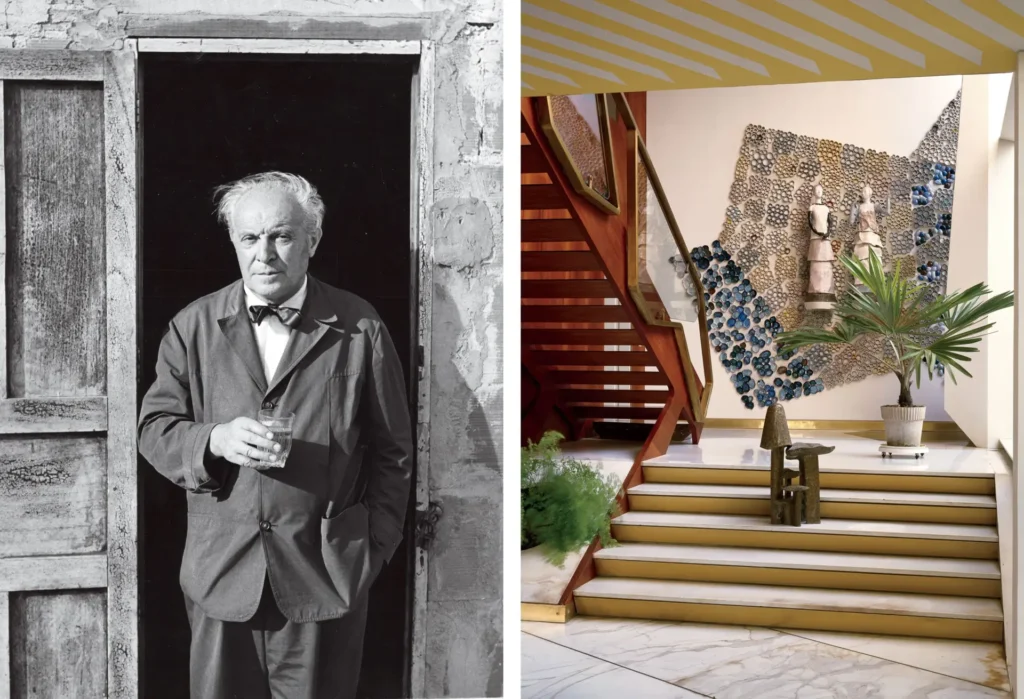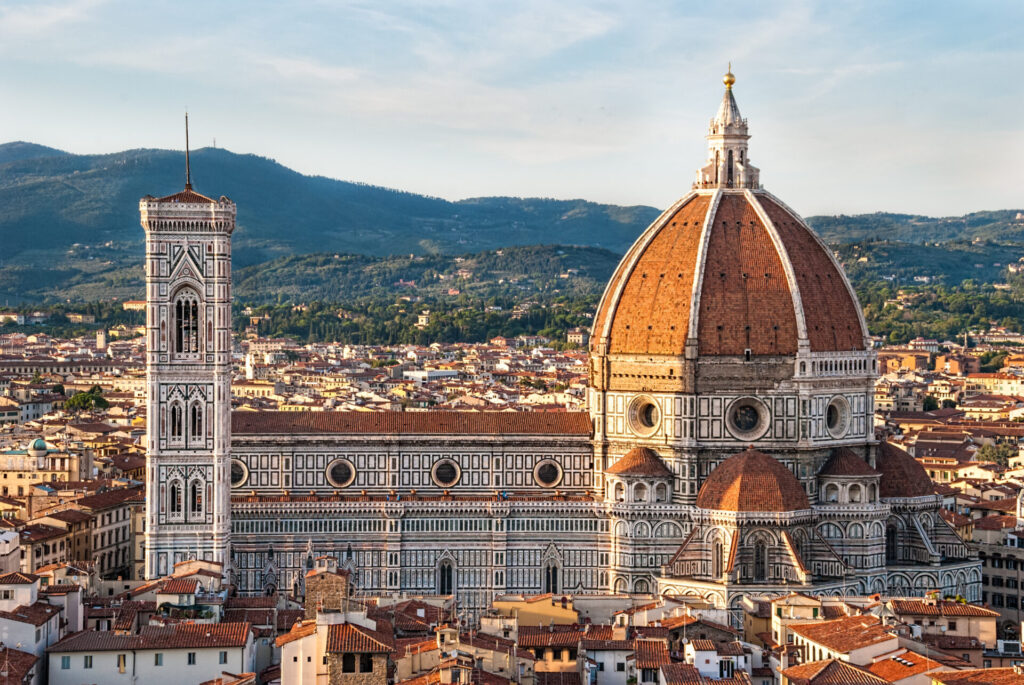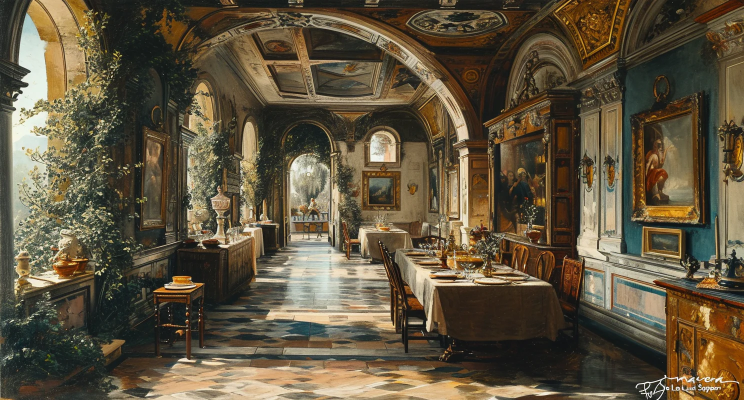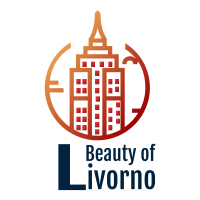Italy, renowned for its rich cultural heritage and timeless architectural marvels, has wielded significant influence over global design trends throughout history. From the grandeur of ancient Roman structures to the elegance of Renaissance palaces, Italian architecture has captivated the world with its beauty and innovation. This article explores the enduring impact of Italian architecture on global design trends, tracing its evolution from antiquity to the modern era and speculating on its future trajectory.
Italy’s Architectural Legacy: An Enduring Influence

Italian architecture boasts a legacy that spans millennia, encompassing a diverse array of styles and periods. Ancient Roman architecture, characterized by its monumental structures and innovative engineering techniques, laid the groundwork for architectural principles that endure to this day. The iconic arches, domes, and columns of Roman buildings such as the Colosseum and the Pantheon continue to inspire architects worldwide, serving as timeless symbols of architectural excellence.
Transitioning to the Renaissance period, Italy experienced a cultural renaissance marked by a revival of classical aesthetics and a newfound emphasis on humanism. Architects such as Filippo Brunelleschi and Leon Battista Alberti pioneered new architectural forms and design principles, giving rise to iconic landmarks such as the Florence Cathedral and the Palazzo Vecchio. The harmony, proportion, and attention to detail evident in Renaissance architecture continue to influence contemporary design, with architects and designers drawing inspiration from its timeless elegance.
Italian Architecture in the Modern Era: Innovation and Adaptation
As the world entered the modern era, Italian architecture continued to evolve, embracing new technologies and design philosophies while retaining its distinctive aesthetic sensibility. The rise of modernism brought about a departure from traditional ornamentation and a focus on functionality and simplicity. Italian architects such as Gio Ponti and Renzo Piano embraced modernist principles while infusing their designs with a distinct Italian flair.
The post-war period witnessed a surge in architectural innovation in Italy, fueled by economic prosperity and a spirit of renewal. The architectural feats of the Italian Rationalist movement, epitomized by figures like Giuseppe Terragni and Pier Luigi Nervi, reflected a commitment to rationality, efficiency, and social progress. Meanwhile, the emergence of the “Italian Style” in design, characterized by a harmonious blend of tradition and modernity, captivated audiences worldwide. If you dedicate yourself to one of the excellent hospitality courses, you can learn a lot more about the history of this architecture as well as the beautiful traditions of Italy and other tourist gems that are definitely worth visiting while you are on this trip.
Italian Architecture Today: A Fusion of Tradition and Innovation
In the 21st century, Italian architecture continues to thrive, embodying a dynamic synthesis of tradition and innovation. Contemporary architects such as Renzo Piano and Massimiliano Fuksas have gained international acclaim for their visionary designs, which seamlessly integrate cutting-edge technology with timeless design principles. From the iconic skyline of Milan to the picturesque landscapes of Tuscany, Italian architecture remains a testament to the enduring power of human creativity and ingenuity.
Looking ahead, the future of Italian architecture holds boundless possibilities, as architects grapple with pressing global challenges such as climate change, urbanization, and social inequality. Sustainability and resilience have emerged as central tenets of contemporary architectural practice, with Italian architects at the forefront of efforts to create environmentally conscious and socially inclusive built environments. By embracing innovation while honoring its rich cultural heritage, Italian architecture is poised to shape global design trends for generations to come. In addition, the emphasis is placed on commitment to sustainable infrastructure, which implies proper use and saving of water with well-developed systems with reliable turbine flow meter and safety pipes.
Innovations in Sustainable Design: Redefining Environmental Consciousness
In recent years, Italian architects have been at the forefront of innovations in sustainable design, redefining the relationship between architecture and the environment. With growing concerns about climate change and resource depletion, architects in Italy are pioneering new approaches to building design and construction that prioritize environmental sustainability. From green roofs and passive solar design to the use of recycled materials and energy-efficient systems, Italian architects are exploring innovative solutions to reduce the ecological footprint of buildings and promote a more sustainable built environment.
Moreover, Italy has been investing in research and development initiatives aimed at advancing sustainable construction practices. Collaborations between architects, engineers, and environmental scientists have led to breakthroughs in green building technologies, such as advanced insulation materials, water-saving technologies, and renewable energy systems. These innovations not only reduce the environmental impact of buildings but also contribute to long-term cost savings and energy efficiency. The installation of some of the discreet and very useful solar panels opens up possibilities for the use of renewable energy sources in everyday life, and if you have also thought about it, you can look for an experienced electrician in Plano, TX who will connect and install everything for you so that you will soon be able to enjoy your environmental energy.
Revitalizing Urban Spaces: The Role of Italian Architecture in Urban Renewal

Italy’s urban centers are undergoing a renaissance, thanks in part to the transformative power of architecture in revitalizing urban spaces. From historic city centers to industrial neighborhoods, Italian architects are leading efforts to revitalize and regenerate urban areas, creating vibrant and livable communities. Through adaptive reuse projects, mixed-use developments, and pedestrian-friendly design interventions, Italian architects are breathing new life into neglected urban spaces, fostering social interaction, economic vitality, and cultural enrichment. Thinking about the right investment is working to revive many neighborhoods, and if you also want to invest smartly in one of the properties for a living, you can think about the beautiful houses in Boca Falls that are very suitable and affordable for living.
Additionally, Italian architects are leveraging the principles of placemaking and community-oriented design to create inclusive and welcoming urban environments. By engaging with residents, local businesses, and community organizations, architects are co-creating spaces that reflect the unique identity and aspirations of each neighborhood. From public parks and squares to cultural hubs and marketplaces, these collaborative design processes are reimagining urban spaces as catalysts for social cohesion and civic pride. In order for all of this to be according to the wishes of the population, community votes are organized on special public sites, which are taken care of by responsible WordPress maintenance, on the basis of which it is decided how to further improve life in that area.
Furthermore, Italy’s rich architectural heritage serves as a source of inspiration for urban renewal initiatives, with architects drawing upon historic buildings and urban fabrics to inform contemporary design interventions. By preserving and celebrating the character of historic neighborhoods while integrating modern amenities and infrastructure, Italian architects are striking a delicate balance between tradition and progress in urban development.
Cultural Preservation and Heritage Conservation: Balancing Tradition and Progress
Italy’s rich cultural heritage is a source of pride and inspiration for architects and preservationists alike. As the custodians of centuries-old monuments and historic sites, Italian architects are tasked with preserving and protecting the country’s cultural legacy while accommodating the needs of a modern society. Through careful restoration, adaptive reuse, and heritage conservation efforts, Italian architects are striking a delicate balance between tradition and progress, ensuring that Italy’s architectural heritage remains accessible and relevant for future generations. Some of the particularly significant buildings are certainly the beautiful and old cathedrals that have remained as a gift to society, and if you want to leave such a mark in your community, you can hire excellent church architects who will create designs for the cathedral according to your wishes.
Moreover, Italy’s approach to cultural preservation emphasizes the importance of community engagement and stakeholder collaboration in shaping the future of historic sites and monuments. Architects work closely with local residents, heritage organizations, and government agencies to develop conservation strategies that respect the integrity of historic structures while meeting the evolving needs of contemporary society. This participatory approach ensures that preservation efforts are guided by a shared vision of cultural stewardship and sustainability. Different organizations finance these projects, and by investing in these common desires for the renovation and development of a nation, a significant step is taken towards the future, and if you have taken a loan from the bank due to your current situation, you do not have to worry, because of the excellent possibilities of payday loan consolidation with which you will quickly and pay off your debts easily.
Furthermore, advances in conservation science and technology are enabling architects to undertake ambitious restoration projects that were once thought impossible. From laser scanning and 3D modeling to innovative materials and techniques, architects are employing cutting-edge tools and methodologies to preserve and protect historic buildings and monuments with unprecedented precision and accuracy. These advancements not only ensure the long-term survival of cultural heritage but also enhance our understanding and appreciation of the past. With the excellent capabilities of the product design studio, today they also have the ability to create very useful and reliable 3D models that help them better visualize the end product of the restoration.
The Intersection of Art and Architecture: Exploring the Boundaries of Creativity
In Italy, art and architecture have always been closely intertwined, with architects drawing inspiration from the rich artistic traditions that have flourished throughout the country’s history. Today, Italian architects continue to explore the intersection of art and architecture, blurring the boundaries between disciplines and creating immersive and experiential spaces that engage the senses and provoke thought. Through innovative use of materials, light, and space, Italian architects are pushing the boundaries of creativity and challenging conventional notions of what architecture can be. This artistic view of architecture is also reflected in other things like the exquisite designs of original Italian cars that you can find in the form of small cars with personalized RC bodies as souvenirs.
Moreover, Italy’s vibrant contemporary art scene serves as a source of inspiration and collaboration for architects seeking to infuse their designs with artistic expression. From site-specific installations and public artworks to interdisciplinary collaborations with artists and designers, architects are integrating art into the fabric of the built environment in unexpected and provocative ways. This fusion of art and architecture not only enhances the aesthetic appeal of buildings but also creates meaningful connections between people and their surroundings. All this is perfectly reflected in the exceptional and special interior that exudes style and elegance, and if it inspires you to make some changes in your environment, you can hire an excellent remodeling contractor to help you with that.
Furthermore, Italian architects are embracing the principles of experiential design to create immersive and transformative architectural experiences that engage the senses and evoke emotional responses. By orchestrating spatial sequences, material textures, and lighting effects, architects are crafting environments that tell stories, evoke memories, and stimulate the imagination. These multi-sensory experiences invite visitors to engage with architecture on a deeper level, fostering connections between people, places, and cultures. If you join some of these extraordinary moments of exploration where you can devote yourself to some of the interesting workshops that will take you deeper into Italian architecture, don’t forget to pack your jewelry in a compact and travel-friendly ring case to avoid loss or damage.
Adapting to Changing Demographics: Designing for a Diverse Society
Italy, like many countries, is experiencing demographic shifts that pose new challenges and opportunities for architects and urban planners. From aging populations to increasing cultural diversity, Italian architects are tasked with designing spaces that accommodate the needs of a rapidly changing society. Whether it’s designing age-friendly housing, inclusive public spaces, or culturally sensitive religious buildings, Italian architects are embracing the principles of universal design and social equity to create environments that are accessible and welcoming to all. However, despite this, a lot of the old population is fighting for the old, traditional forms of architecture, while younger organizations are looking at modernization as well as more responsible and ecological movements, if you also want to participate in a responsible environmental movement, you can count on excellent junk removal in Philadelphia, PA, whenever you have a lot of waste from renovations or other major jobs.
Moreover, Italy’s aging population presents unique design challenges related to mobility, accessibility, and healthcare infrastructure. Architects are reimagining retirement communities, nursing homes, and healthcare facilities to provide environments that support aging in place and promote active and independent living. By integrating universal design principles and assistive technologies, architects are creating environments that empower older adults to maintain their dignity, autonomy, and quality of life. In addition, it also includes many pleasant establishments for relaxation, such as spas, where the population, both older and younger, can expect excellent and healthy treatments with cosmetic products packed in recycled cosmetic packaging that is extremely ecological and promotes a positive impact on the environment.
Furthermore, Italy’s increasingly diverse population is reshaping the social and cultural fabric of cities and neighborhoods, necessitating new approaches to urban design and community planning. Architects are designing spaces that celebrate cultural diversity, promote social inclusion, and foster intercultural dialogue and exchange. From multicultural community centers and religious institutions to mixed-use developments and public gathering spaces, these initiatives reflect Italy’s commitment to building more inclusive and cohesive communities. Many of these facilities serve as large markets and places for wholesale hats, clothes, and other items, where many people also meet, get to know, and share the traditions of a nation with their tourists.
Globalization and Architectural Identity: Navigating a Complex Landscape

In an increasingly interconnected world, architects in Italy are grappling with the complexities of globalization and its impact on architectural identity. As architectural styles and trends cross borders and cultures, Italian architects are faced with the challenge of preserving their unique cultural heritage while engaging with global influences. Through a process of dialogue and exchange, Italian architects are redefining what it means to be Italian in a global context, embracing diversity and innovation while honoring the timeless principles of Italian design. The internet provider that manages IT services in San Antonio provides its users with excellent internet with which they can easily connect with various artists and architects around the world to share their visions and ideas and help develop new creations.
Moreover, Italy’s architectural identity is shaped by a rich tapestry of regional traditions, historical influences, and cultural expressions, each contributing to a diverse and dynamic architectural landscape. From the Renaissance palaces of Florence to the Baroque churches of Rome, Italy’s architectural heritage reflects a synthesis of local craftsmanship, artistic mastery, and cultural symbolism. Architects draw upon this rich legacy as they navigate the complexities of globalization, seeking to create spaces that resonate with both local and global audiences. In order to achieve all this while fully expressing their creative visions, architects often rely on the excellent benefits of recovery wear, which removes the pain accumulated in the muscles from a hard day and allows them to start a new working day happily.
Furthermore, Italy’s architectural exports—from iconic landmarks such as the Leaning Tower of Pisa to contemporary masterpieces like the MAXXI Museum in Rome—serve as ambassadors of Italian design excellence on the world stage. Italian architects are actively engaging with international markets, collaborating with clients, developers, and governments to realize ambitious projects that showcase Italy’s architectural prowess and cultural heritage. By exporting Italian design expertise and craftsmanship to global markets, architects are extending the reach and influence of Italian architecture around the world. In order for all these beautiful towns to remain always accessible to tourists from all over the world, Italian architects also take good care of roads and infrastructure, hiring the best asphalt maintenance, which can also help you if you want an elegant and clean approach to your yard.
Conclusion
In conclusion, the influence of Italian architecture on global design trends is multifaceted and enduring, encompassing a rich tapestry of history, innovation, and cultural heritage. From ancient Roman ruins to cutting-edge sustainable designs, Italy’s architectural legacy continues to inspire and shape the built environment around the world. As architects navigate the challenges and opportunities of the 21st century, the principles of Italian design—harmony, beauty, and innovation—will continue to serve as guiding beacons, ensuring that Italian architecture remains at the forefront of global design discourse for generations to come.
